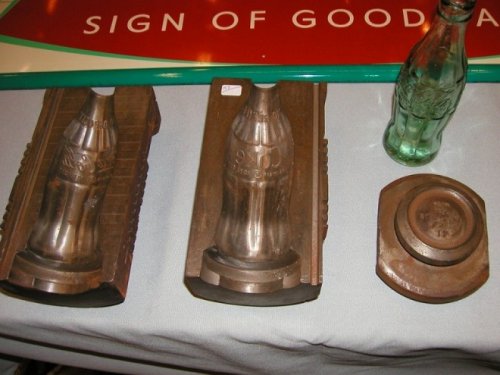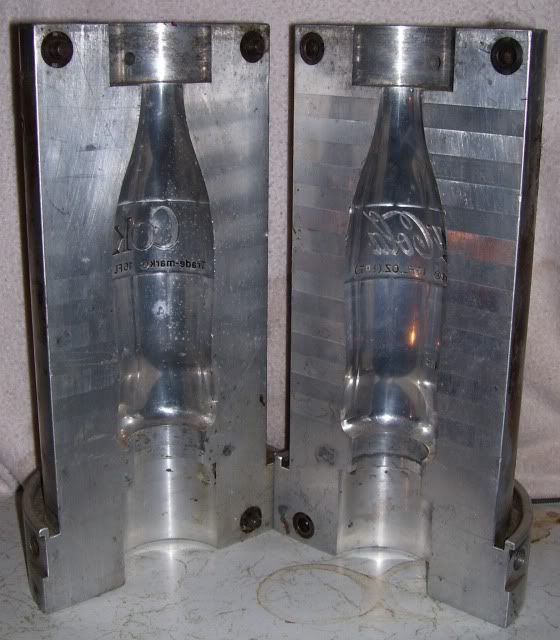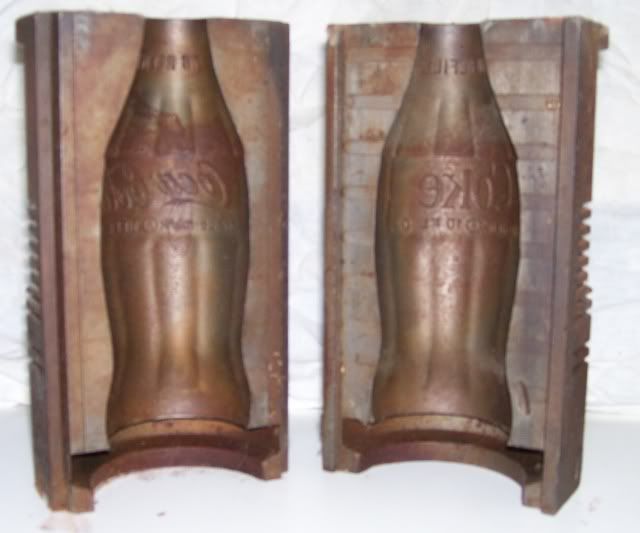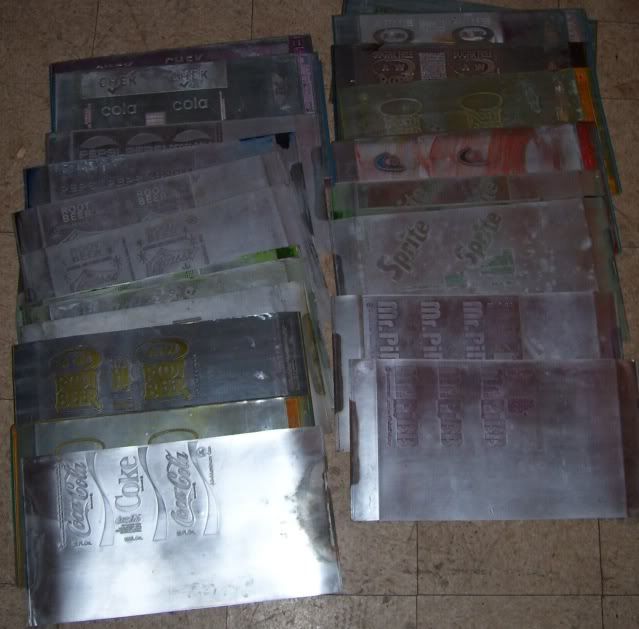SODAPOPBOB
Well-Known Member
- Joined
- Mar 10, 2010
- Messages
- 11,502
- Reaction score
- 49
- Points
- 0
Howdy again ~
Just for the record, and for those who haven't already surmised it yet, I consider myself a pretty intense guy when it comes to research. As some of you have noticed from my previous postings, I sometimes dig so deep into my research that I bury muself. I guess that's just my nature, and hope to heck it doesn't offend anyone. And if it does, let me apologize now, and state that my only intent is to broaden our knowledge and enjoyment of collecting something that was tossed away as completely worthless back in the day.
With that said, I would like to draw attention to the "thousands" of soda bottle molds that were used prior to about 1930. I'm currently doing some research in this area, and would like to invite anyone interested in this topic to join me. The photo below is an example of what I am referring to. In this case it is an older Coca Cola "hobbleskirt" mold, but I am also interested in most any of the early molds in general. There aren't too many collectors in this area that I know of, as the molds are extremely difficult to come by, and often command high prices when they do become available.
From time to time I will add additional information to this thread, and hopefully come up with some interesting information to make it a worthwhile read. In the meantime, if there is anyone among us who already has a collection of these molds, or would just like to add their 2-cents worth, please feel free to do so. My primary focus will not pertain to value so much as it will to rarity and variety. Notice in the photo below how the wording is reversed. The first time I saw one of these the wording struck me as odd because I never really thought about before. But how cool would it be to have a collection of these gizmoz?
(Photos welcomed ... and encouraged).
Thanks a million for allowing me to indulge myself without getting yelled at.
Sincerely,
SODAPOPBOB < I really am a "POP" too! I have three daughters and two grandchildren that call me that.

Just for the record, and for those who haven't already surmised it yet, I consider myself a pretty intense guy when it comes to research. As some of you have noticed from my previous postings, I sometimes dig so deep into my research that I bury muself. I guess that's just my nature, and hope to heck it doesn't offend anyone. And if it does, let me apologize now, and state that my only intent is to broaden our knowledge and enjoyment of collecting something that was tossed away as completely worthless back in the day.
With that said, I would like to draw attention to the "thousands" of soda bottle molds that were used prior to about 1930. I'm currently doing some research in this area, and would like to invite anyone interested in this topic to join me. The photo below is an example of what I am referring to. In this case it is an older Coca Cola "hobbleskirt" mold, but I am also interested in most any of the early molds in general. There aren't too many collectors in this area that I know of, as the molds are extremely difficult to come by, and often command high prices when they do become available.
From time to time I will add additional information to this thread, and hopefully come up with some interesting information to make it a worthwhile read. In the meantime, if there is anyone among us who already has a collection of these molds, or would just like to add their 2-cents worth, please feel free to do so. My primary focus will not pertain to value so much as it will to rarity and variety. Notice in the photo below how the wording is reversed. The first time I saw one of these the wording struck me as odd because I never really thought about before. But how cool would it be to have a collection of these gizmoz?
(Photos welcomed ... and encouraged).
Thanks a million for allowing me to indulge myself without getting yelled at.
Sincerely,
SODAPOPBOB < I really am a "POP" too! I have three daughters and two grandchildren that call me that.





